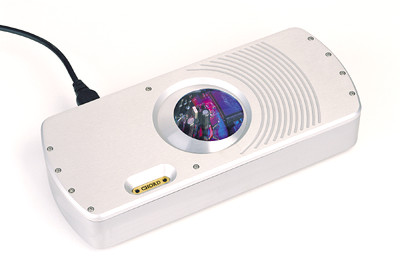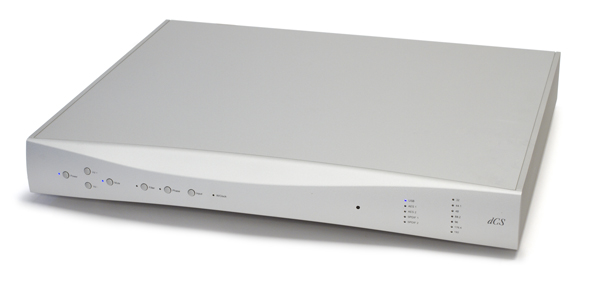This is for you if you’re an audiophile who’s tired of all those bothersome cables, or a regular person who’s put off by the notion of them in the first place. It’s essentially a high-quality digital-to-analogue converter that also functions as a UPnP music server and an AirPlay receiver. As a result, it’s a surprisingly versatile tiny gadget, capable of wirelessly playing music from your Network Attached Storage drive or PC, as well as any AirPlay compatible iDevice. It even syncs with Android phones, allowing users to ‘throw’ music at it to play.
The complexity of its chipsets and wireless networking protocols are unlikely to pique the curiosity of most purchasers. Rather, they’ll make you feel like Compact Cassette has been reimagined. Remember back in the 1980s, when we had a universal music medium that we could listen to at any time, in any location? It’s back, and it’s better than ever. We all have music on our phones, tablets, and computers, and the £400 airDAC enables you listen to it through your hi-fi. Marvelous!
When you turn it on, it creates its own local network, which you can select on your computer like you would a Wi-Fi network in a new coffee shop you’ve just visited. Then, instead of going to your computer speakers, you can pick AirPlay as your music output device, and everything that would normally go to them goes to the airDAC. You can load up iTunes, hit the small button that appears when it detects an AirPlay network, and your favorite tunes will start playing through your hi-fi. Yes, it’s that simple – in less than a minute, my Sony Xperia Android phone was playing music.
AirPlay is free and simple to use, and it even works for PC audiophiles who use Audirvana or other specialized music player software. I quickly got my hi-res music playing by altering the output setting in the Preferences menu item, for example. The limitation is that the system can only handle 16bit, 44.1kHz sampling rates, therefore my 24/96 Kate Bush album 50 Words for Snow had to have its digits rearranged to fit on a CD. That’s the main drawback of AirPlay, which is intended to be simple to use.
If you want to listen to high-resolution audio, you’ll need to use the airDAC’s UPnP feature, which is a little more difficult to set up due to the fairly nerdy instruction booklet. Connect the airDAC to your network through an Ethernet wire to begin the procedure, following which you can access the settings via a web browser page and modify things to your heart’s desire. When using UPnP, the Arcam can stream up to 24/96. Arcam generously provides a free SongBook app, which on my iPad was a little buggy – maybe the next version will fix that.
You may connect your Compact Disc or Blu-ray player to the unit’s coaxial and optical digital inputs, and the source is plainly shown on the front panel. You can connect your amplifier to the single pair of RCA analogue line outputs, or you can use the coaxial digital output to send the digital datastream to a superior DAC. It has a stunning (190x120x44mm, 1.1kg) aluminium housing with non-slip rubber base, a four-layer PCB inside, and multiple low noise individually regulated power sources — albeit instead of the Burr Brown PCM1796 DAC chip, a Texas Instruments PCM5102 DAC chip (running up to 24/96) is attached.
The result is an Arcam sound that is somewhat warmer than neutral, with a beautiful sweet treble and an expansive yet smooth midband. Because wired is always preferable to wireless, the airDAC performs at its best when connected through coaxial digital in or Ethernet. You’ll hear a bright, sprightly sound with a lot of energy and drive, as well as a surprising amount of bass.
The Four Horsemen by Aphrodite’s Child was an exuberant, expansive affair that was a lot of fun to listen to. I was astonished by how lively and engaging the sound was, despite the Arcam’s lack of roughness or edge. The incredibly broad soundstage also wowed me, however I did notice a tendency for the music to cluster around the plane of the speakers just as I began to question Arcam’s pricing policy; its depth perspective is no match for more expensive DACs.
There was a tiny thinning down of stage depth via AirPlay from Audirvana, but it still sounded fantastic. Rock by Herbie Hancock With a pile-driving bass and forceful snare drum and hi-hat work delivered with deadly accuracy, it was tremendously quick and lively. Fragile State’s Every Day a Different Story’s swirling ambient noises were also great to listen to; there’s something naturally musical about this DAC that makes everything you play sound fast and exciting. It’s not without refinement; certainly, the Audiolab M-DAC is superior, but it’s more expensive and lacks the airDAC’s wireless capabilities.
Arcam’s new infant digital converter is, therefore, a fantastic product. Its feature set, as well as its build quality, are exceptional for the budget, but it nevertheless takes sound quality very seriously – and is styled as well as many DACs costing five times as much. Oh, and it’s by far the most accessible hi-fi implementation of AirPlay to date, which further adds to the attractiveness of this excellent convenience format.







